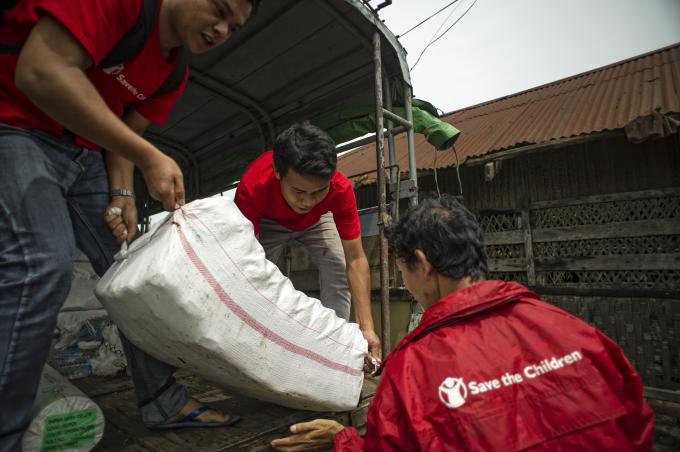News & Updates
Focus on South East Asia: Myanmar
08 March 2017

South East Asia is particularly prone to natural disasters: a situation which is compounded by the fact that more than half the countries in the region are low or lower income. In addition, three countries (Cambodia, Lao PDR and Myanmar) are considered least developed.
Of these, Myanmar has suffered particularly from cyclones and resultant flooding and landslides. The Internal Displacement Monitoring Centre’s recent report shows that in 2015, 1.6 million people were displaced as a result of cyclone Komen, resulting in the fifth highest figure worldwide in absolute terms. This devastation followed in the wake of Cyclone Nargis in 2008, which killed nearly 140,000 people and affected 2.4 million people, and Cyclone Giri in 2010, which affected 183,000 people. Myanmar ranks 2nd out of 187 countries in the Global Climate Risk Index and 12th out of 191 countries in the Index of Risk Management (INFORM).
One of the biggest aid organisations working in Myanmar is Save the Children. The charity has been operating in the country since 1995 and now has around thirty offices and 1400 staff deployed. The Aid & International Development Forum (AIDF) spoke to Save the Children UK’s Regional Portfolio Officer for Asia, Gareth Mace, about current projects and innovations in Myanmar.
Save the Children’s nutrition work, funded by Livelihoods and Food Security Trust Fund (LIFT), is gaining real traction. This year, State Counsellor Aung San Suu Kyi launched Myanmar’s first national government initiative on nutrition in an attempt to tackle some of the world’s highest malnourishment rates among young children. Mr Mace said:
“Our hope is to help support the adoption of a government-led cash transfer programme to help improve the nutritional contexts of children, particularly in the most critical first 1,000 days of life. Behaviour Change Communications forms an important aspect of our work with communities also, and we are partnering with Innovations for Poverty Action on a Randomized Control Trial to generate evidence of the programme’s effectiveness.”
With Myanmar’s population suffering the effects of monsoon, flooding and landslides, Save the Children’s work to promote health and WASH (Water, Sanitation and Hygiene) is vital.
The charity is working with the Three Millennium Development Goal Fund (3MDG) to promote maternal and newborn child health (MNCH). In five states (Magwe, Northern Shan, Chin, Labutta, Ngapudaw), this work has built the capacity of local health structures to provide services for young children and mothers.
The simple act of washing hands has a huge preventative impact on disease. Save the Children is operating its new Surprise Soap initiative in Myanmar to promote hand washing for children:
“It’s quite an innovative and fun concept which highlights our desire to seek new solutions to longstanding challenges. We’re excited to see the impact that it will have.”
Surprise Soap is being trialled with children between the ages of three and 12 in an IDP (Internally Displaced Persons) camp in Rakhine State, Myanmar, later this year. The soap will be co-designed with the children and used by them in their homes. Through the Surprise Soap project, the charity hopes to achieve an overall improvement in child health in the camp, and a reduction in the number of cases and deaths from diarrhoea and pneumonia.
In addition to initiatives like Surprise Soap, there is an ongoing humanitarian programme funded by European Civil Protection and Humanitarian Aid Operations (ECHO) in Kachin and Northern Shan state. Here, Save the Children works in collaboration with local CSOs (civil society organisations) and government at multiple levels to improve the basic conditions of local communities. The primary focus is on reducing morbidity and mortality from waterborne diseases, through improving access to safe water and sanitation facilities, and improving hygiene behaviours more broadly.
Rapid urbanisation and increasingly frequent natural disasters combine with high levels of poverty and lack of infrastructure to create a complex set of challenges in Myanmar. While on the surface, its economy is predicted to grow by around eight per cent this year, its people will continue to need the expertise and capacity of aid organisations like Save the Children for the foreseeable future.
By Daniel Knag for AIDF
With Thanks to Gareth Mace, Save the Children UK
Picture credit: Save the Children